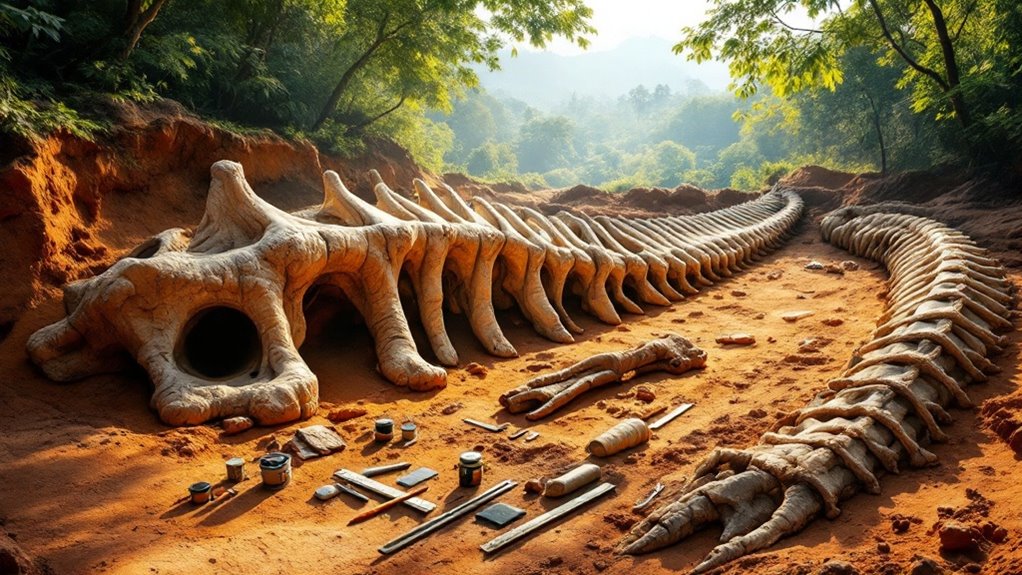Recent excavations in Phu Wiang National Park, Khon Kaen, Thailand, have uncovered giant sauropod dinosaur bones, some measuring nearly 20 meters in length, sparking debate among paleontologists about the possible discovery of a new species. These fossils show distinct differences from previously known dinosaurs like Phuwiangosaurus sirindhornae, particularly in bone tissue structure. The remains, believed to be 130 million years old and from the Brachiosauridae family, highlight the region’s growing significance in dinosaur research and public education. Additional findings offer further insight.
Although the discovery of dinosaur fossils in Thailand is relatively recent, Phu Wiang National Park in Khon Kaen Province has become a significant site for paleontological research due to the unearthing of giant sauropod bones. The first evidence of dinosaur remains in the area appeared in 1976, when a Thai geological team, conducting a uranium survey, encountered fossilized bones. Subsequent analysis by French paleobiologists confirmed that these belonged to a sauropod dinosaur, initiating a series of systematic excavations that continue to the present day.
Phu Wiang National Park emerged as a key paleontological site after the discovery of giant sauropod fossils in 1976.
The Department of Mineral Resources, Mahasarakham University, and Khon Kaen Geopark collaborate on these efforts, which have expanded to nine distinct excavation sites within the park. The public is permitted to observe ongoing fossil recovery and research, making Phu Wiang a focal point for both scientific inquiry and education. [The excavation in 2024 at Huay Pratu Tima Excavation Site uncovered fossils estimated to belong to a nearly 20-metre-long sauropod, with bones larger than previously discovered species.]
The sauropod bones discovered at Phu Wiang exhibit several notable characteristics. These include upper neck vertebrae and large ribs with porous, bird-like structures, suggesting adaptations for supporting a massive body. The vertebrae and ribs contain small air cavities, a feature typical of the Brachiosauridae family, which includes some of the largest known herbivorous dinosaurs.
The estimated length of this dinosaur, nearly 20 meters, exceeds that of the previously described Phuwiangosaurus sirindhornae, indicating the possible presence of a new species. Distinct differences in bone tissue composition further support this hypothesis.
In geological terms, these fossils originate from the Early Cretaceous Sao Khua Formation, dating back approximately 130 million years. Brachiosaurids, the group to which these bones are attributed, are more commonly documented in North America, Africa, and parts of Asia such as China and South Korea.
The Phu Wiang finds have enriched understanding of dinosaur distribution in Southeast Asia, with the region now recognized for producing several important species, including both sauropods and theropods. The discoveries have not only advanced paleontological research but have also led to the establishment of the Phu Wiang Dinosaur Museum, which serves as a center for public education and scientific collaboration.









